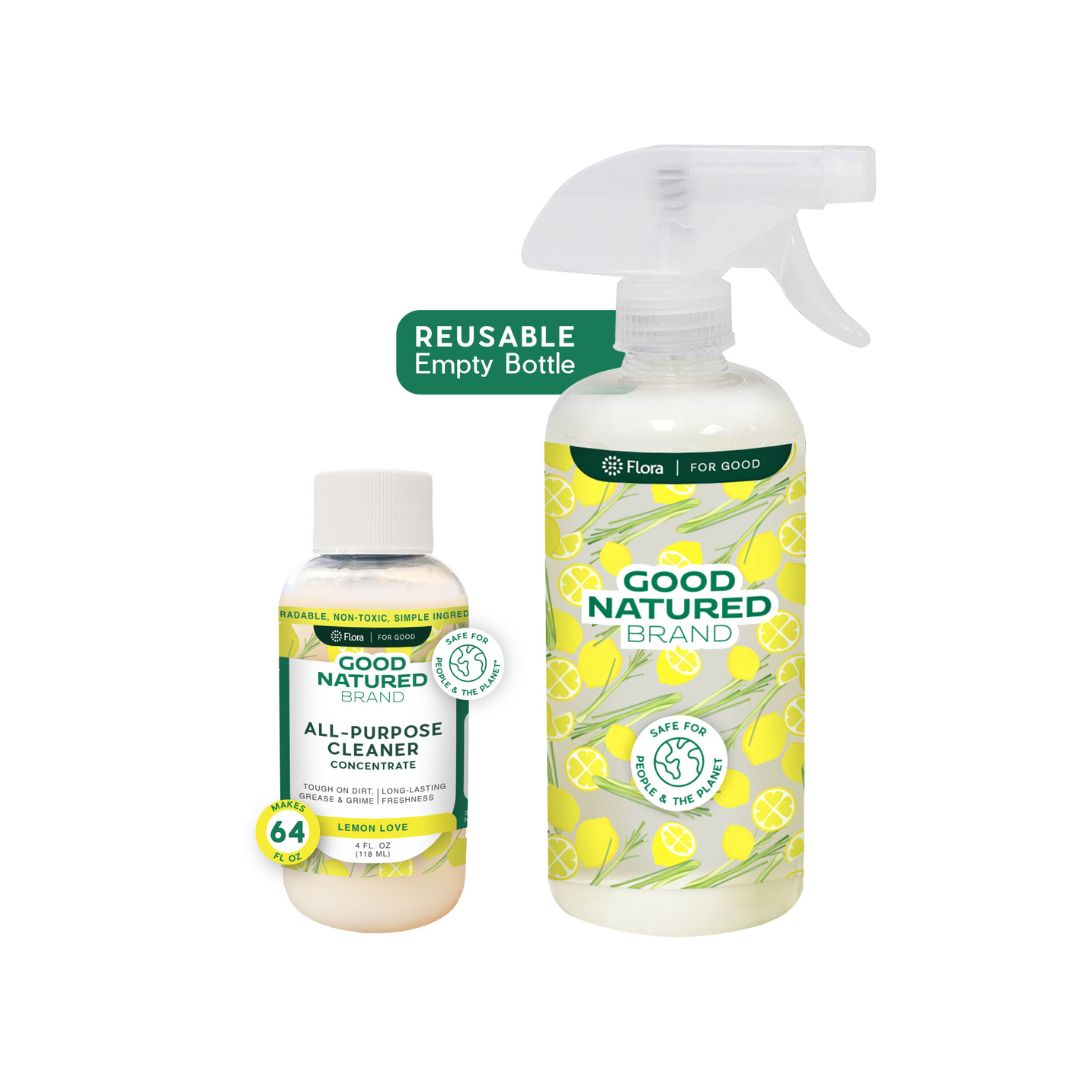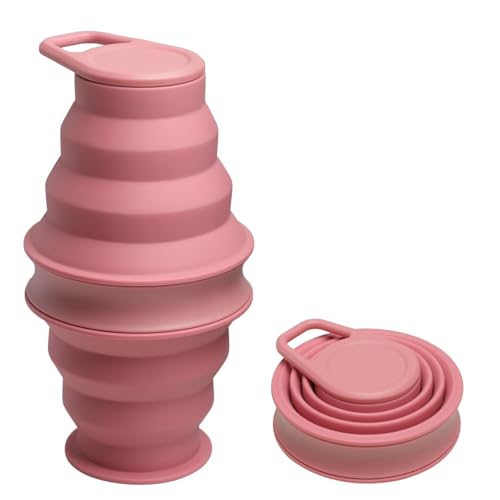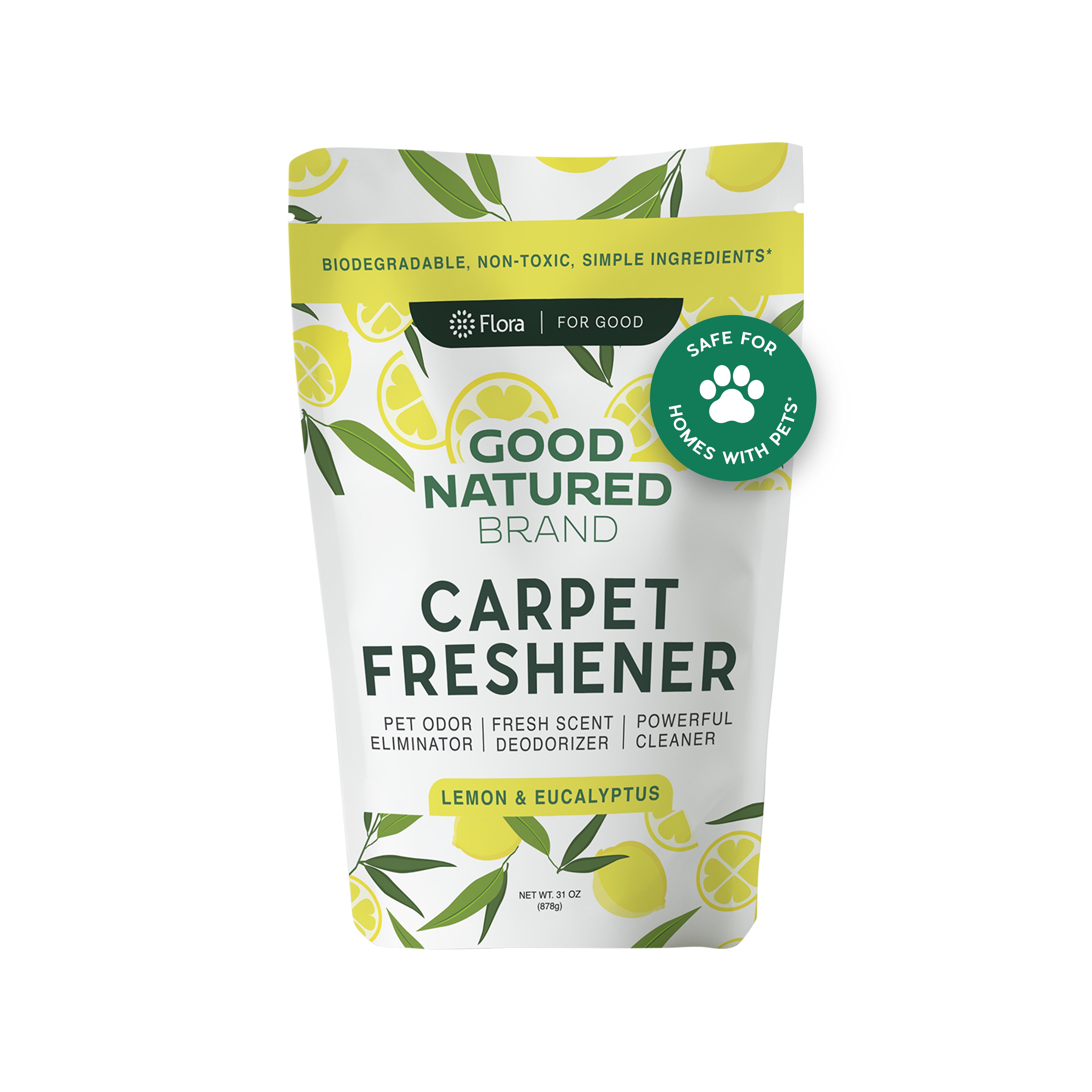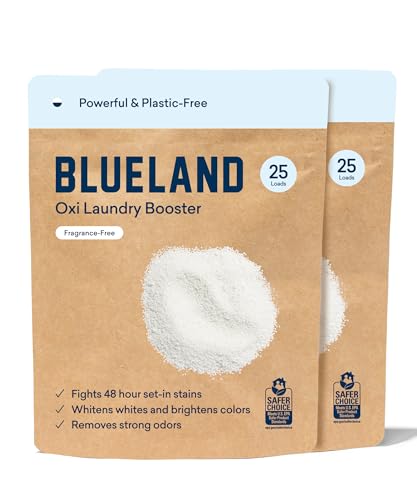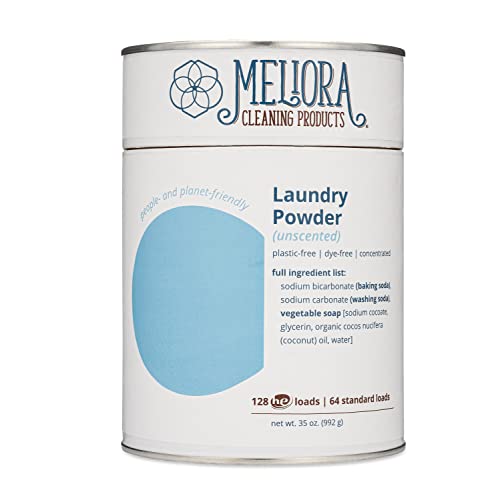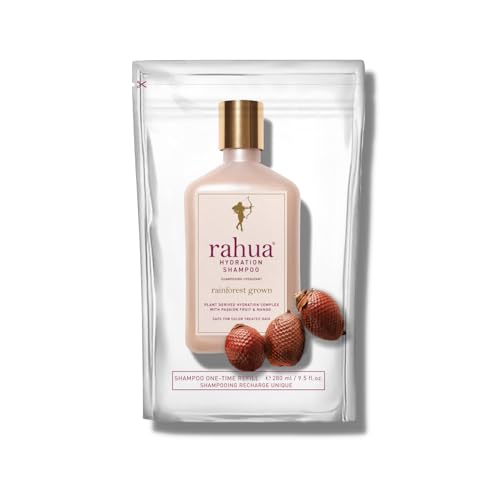
Rahua Hydration Shampoo - Intense Moisture for Healthy, Strong Hair, Tropical Aroma - 9.5 Fl Oz


Cocamidopropyl Betaine
High RiskCocamidopropyl betaine is a synthetic surfactant derived from coconut oil, commonly used in personal care products for its mild cleansing and foaming properties. It functions as a surfactant, emulsifier, and thickening agent, contributing to the texture and performance of formulations.
Sustai Insights
Cocamidopropyl betaine offers functional benefits as a gentle surfactant, enhancing product foaming and texture. However, it may pose low to moderate allergenic risks and is subject to high use restrictions due to contamination concerns. Regulatory bodies have advised on its safe levels of usage, categorizing its risk level as high overall. Users should practice caution, particularly with sensitive populations, and consider alternatives like naturally derived surfactants for safer formulations.
Monosodium Glutamate
Low RiskMonosodium glutamate (MSG) is the monosodium salt of glutamic acid, an amino acid naturally found in various foods. It is primarily used as a flavor enhancer in food products, providing umami taste, which is one of the five basic tastes alongside sweet, sour, bitter, and salty.
Sustai Insights
Monosodium glutamate offers functional benefits as a flavor enhancer, effectively improving taste in various dishes. It is considered low risk regarding carcinogenicity, allergies, and reproductive toxicity, with no significant environmental hazards reported. Regulatory bodies, including the FDA, recognize its safe use. Despite common misconceptions linking MSG to adverse health effects, scientific consensus supports its safety at typical consumption levels. Therefore, the overall risk associated with monosodium glutamate is low, and it can be safely used in food products.
Kaolinite
Low RiskKaolinite is a clay mineral formed from the weathering of aluminosilicate minerals. It is commonly used in various products for its properties as a thickener, filler, and absorbent. Kaolinite is often included in cosmetics, personal care products, and pharmaceuticals.
Sustai Insights
Kaolinite serves as an effective thickener and absorbent in formulations, contributing to product texture and stability. It is generally recognized as safe with low health risks, including minimal concerns regarding carcinogenicity, allergies, and reproductive toxicity. Environmental impacts are limited, as kaolinite is not considered a pollutant or bioaccumulative. Regulatory bodies have not imposed significant restrictions on its use. Overall, kaolinite presents a low risk, making it a suitable choice in many applications, with no significant adverse health or environmental effects noted.
Water
Low RiskWater is a clear, colorless liquid essential for various biological processes. It serves as a solvent in formulations, facilitating the dissolution of other ingredients and enhancing product texture and application. Additionally, water plays a crucial role in hydration and is a key component in many cosmetic and personal care products.
Sustai Insights
Water is an effective solvent and hydrator, contributing to the texture and efficacy of formulations. It is biodegradable and generally regarded as safe, with low concerns regarding carcinogenicity, allergies, and reproductive toxicity. However, excessive water usage can lead to environmental concerns, particularly regarding resource depletion. Regulatory bodies do not impose restrictions on water use in cosmetics. Overall, the risks associated with water are low, making it a safe and essential ingredient.
Hydrolyzed Quinoa Protein
Low RiskHydrolyzed quinoa protein is a protein derived from quinoa through a hydrolysis process, which breaks down the protein into smaller peptides. It is commonly used in cosmetic and personal care products for its moisture-retaining properties and ability to enhance the texture and feel of formulations.
Sustai Insights
Hydrolyzed quinoa protein offers functional benefits such as improving moisture retention and skin feel in formulations. It is sustainably sourced from quinoa, a renewable crop. Health risks are minimal, with low concerns for carcinogenicity, allergenicity, and reproductive toxicity. Environmental impacts are also low, as it does not contribute significantly to pollution or bioaccumulation. Regulatory bodies do not impose restrictions on this ingredient. Overall, it is assessed as low risk, making it a safe option for use in personal care products.
Sodium Methyl Cocoyl Taurate
Low RiskSodium methyl cocoyl taurate is a sodium salt derived from coconut fatty acids, primarily used as a mild surfactant and foaming agent in personal care products. It helps to cleanse and stabilize formulations, contributing to improved texture and performance.
Sustai Insights
Sodium methyl cocoyl taurate is recognized for its effective surfactant properties, providing gentle cleansing and foam production in formulations. It is considered low risk for health concerns such as carcinogenicity and allergenic potential, with minimal irritation noted. Environmentally, it poses low hazards with no significant bioaccumulation or pollution risks. Regulatory bodies, including ECHA, indicate no current restrictions. Overall, it presents a low risk profile, making it a viable choice in personal care applications. Safe usage practices are recommended, and alternatives may include other mild surfactants.
Sodium Cocoyl Isethionate
Low RiskSodium cocoyl isethionate is a surfactant derived from coconut oil, commonly used in cosmetic formulations. It functions as a cleansing and foaming agent, contributing to the texture and effectiveness of personal care products such as shampoos and body washes. It helps to remove dirt and oils from the skin and hair.
Sustai Insights
Sodium cocoyl isethionate offers functional benefits as a gentle surfactant that effectively cleanses without stripping moisture. It is biodegradable and derived from renewable sources, enhancing its sustainability profile. Health risks are low, with minimal potential for irritation or allergies noted. Regulatory bodies have not imposed significant restrictions, indicating a favorable risk assessment overall. Usage should be within recommended concentrations to maintain safety. Alternatives include milder surfactants like decyl glucoside for those seeking gentler options. Overall, the ingredient is assessed to have a low risk.
Sea Salt
Low RiskSea salt is a mixture of inorganic salts derived primarily from the evaporation of seawater. It consists mainly of sodium chloride, with minor amounts of other minerals. Sea salt is commonly used as a seasoning and preservative in food products and may also have applications in cosmetics and personal care items.
Sustai Insights
Sea salt serves as an effective flavor enhancer and preservative, contributing to the taste and shelf-life of food products. It is generally considered safe with low risk for health concerns such as cancer, allergies, and reproductive toxicity. Environmental impact is minimal, as it does not contribute significantly to pollution or bioaccumulation. Regulatory bodies, including the FDA, currently do not impose restrictions on its use. Overall, the risk level associated with sea salt is low, making it a widely accepted ingredient with no significant adverse effects reported.
Aloe Barbadensis (Aloe Vera) Leaf Extract
Low RiskAloe vera leaf extract is produced from the succulent leaves of the Aloe barbadensis plant. It is commonly used in cosmetic formulations for its moisturizing and soothing properties, making it a popular ingredient in skincare and personal care products.
Sustai Insights
Aloe vera leaf extract offers several functional benefits, including hydration and skin soothing effects, which are well-supported by scientific literature. It is considered to have a low risk for common health concerns such as carcinogenicity, allergies, or reproductive toxicity. Environmentally, it poses minimal risks, with no significant pollutant potential or bioaccumulation reported. Regulatory bodies have not imposed major restrictions, although verified products should not contain certain contaminants. Overall, this ingredient is assessed as low risk, with safe usage practices and the availability of alternative soothing agents if desired.
Sucrose
Low RiskSucrose is a naturally occurring disaccharide, commonly known as table sugar. It is derived from various plants, primarily sugar cane and sugar beet, and serves as a sweetening agent in a variety of food and cosmetic products.
Sustai Insights
Sucrose is effective as a sweetener and humectant, providing moisture retention in formulations. It is biodegradable and generally recognized as safe, with low concerns regarding carcinogenicity, allergies, and reproductive toxicity. However, excessive consumption can lead to health issues like obesity and diabetes. Environmentally, sucrose poses minimal pollution risk and is not bioaccumulative. Regulatory bodies do not impose significant restrictions on its use. Overall, sucrose presents a low risk when utilized appropriately.
Sodium Cocoyl Glutamate
Low RiskSodium cocoyl glutamate is a sodium salt of glutamic acid, derived from coconut oil. It serves primarily as a surfactant and mild cleansing agent in cosmetic formulations, contributing to the product's ability to remove dirt and oil while being gentle on the skin.
Sustai Insights
Sodium cocoyl glutamate offers functional benefits as a surfactant, enhancing cleansing efficacy without excessive irritation. It is considered low risk regarding health concerns, including carcinogenicity and allergenic potential. Regulatory assessments indicate no significant environmental hazards or restrictions. Overall, it is a low-risk ingredient, suitable for use in personal care products, with no notable adverse effects or regulatory warnings.
Mangifera Indica (Mango) Fruit Extract
Low RiskMangifera indica (mango) fruit extract is derived from the mango fruit and is commonly used in cosmetic and personal care products for its potential moisturizing and antioxidant properties. It serves as a natural ingredient that may enhance product formulation and overall appeal.
Sustai Insights
Mangifera indica (mango) fruit extract is primarily valued for its moisturizing and antioxidant properties, contributing effectively to skin hydration. The extract is considered low-risk regarding cancer, allergies, and reproductive toxicity, with minimal irritation concerns. Environmentally, it poses low pollutant risks and is not bioaccumulative. Regulatory assessments show no current restrictions on its use. Safe usage practices include patch testing, especially for sensitive individuals. Overall, the risk level is low, making it a suitable choice in formulations.
Monosodium Glutamate
Low RiskMonosodium glutamate (MSG) is the monosodium salt of glutamic acid, an amino acid naturally found in various foods. It is primarily used as a flavor enhancer in food products, providing umami taste, which is one of the five basic tastes alongside sweet, sour, bitter, and salty.
Sustai Insights
Monosodium glutamate offers functional benefits as a flavor enhancer, effectively improving taste in various dishes. It is considered low risk regarding carcinogenicity, allergies, and reproductive toxicity, with no significant environmental hazards reported. Regulatory bodies, including the FDA, recognize its safe use. Despite common misconceptions linking MSG to adverse health effects, scientific consensus supports its safety at typical consumption levels. Therefore, the overall risk associated with monosodium glutamate is low, and it can be safely used in food products.
Kaolinite
Low RiskKaolinite is a clay mineral formed from the weathering of aluminosilicate minerals. It is commonly used in various products for its properties as a thickener, filler, and absorbent. Kaolinite is often included in cosmetics, personal care products, and pharmaceuticals.
Sustai Insights
Kaolinite serves as an effective thickener and absorbent in formulations, contributing to product texture and stability. It is generally recognized as safe with low health risks, including minimal concerns regarding carcinogenicity, allergies, and reproductive toxicity. Environmental impacts are limited, as kaolinite is not considered a pollutant or bioaccumulative. Regulatory bodies have not imposed significant restrictions on its use. Overall, kaolinite presents a low risk, making it a suitable choice in many applications, with no significant adverse health or environmental effects noted.
Water
Low RiskWater is a clear, colorless liquid essential for various biological processes. It serves as a solvent in formulations, facilitating the dissolution of other ingredients and enhancing product texture and application. Additionally, water plays a crucial role in hydration and is a key component in many cosmetic and personal care products.
Sustai Insights
Water is an effective solvent and hydrator, contributing to the texture and efficacy of formulations. It is biodegradable and generally regarded as safe, with low concerns regarding carcinogenicity, allergies, and reproductive toxicity. However, excessive water usage can lead to environmental concerns, particularly regarding resource depletion. Regulatory bodies do not impose restrictions on water use in cosmetics. Overall, the risks associated with water are low, making it a safe and essential ingredient.
Cocamidopropyl Betaine
High RiskCocamidopropyl betaine is a synthetic surfactant derived from coconut oil, commonly used in personal care products for its mild cleansing and foaming properties. It functions as a surfactant, emulsifier, and thickening agent, contributing to the texture and performance of formulations.
Sustai Insights
Cocamidopropyl betaine offers functional benefits as a gentle surfactant, enhancing product foaming and texture. However, it may pose low to moderate allergenic risks and is subject to high use restrictions due to contamination concerns. Regulatory bodies have advised on its safe levels of usage, categorizing its risk level as high overall. Users should practice caution, particularly with sensitive populations, and consider alternatives like naturally derived surfactants for safer formulations.
Hydrolyzed Quinoa Protein
Low RiskHydrolyzed quinoa protein is a protein derived from quinoa through a hydrolysis process, which breaks down the protein into smaller peptides. It is commonly used in cosmetic and personal care products for its moisture-retaining properties and ability to enhance the texture and feel of formulations.
Sustai Insights
Hydrolyzed quinoa protein offers functional benefits such as improving moisture retention and skin feel in formulations. It is sustainably sourced from quinoa, a renewable crop. Health risks are minimal, with low concerns for carcinogenicity, allergenicity, and reproductive toxicity. Environmental impacts are also low, as it does not contribute significantly to pollution or bioaccumulation. Regulatory bodies do not impose restrictions on this ingredient. Overall, it is assessed as low risk, making it a safe option for use in personal care products.
Sodium Methyl Cocoyl Taurate
Low RiskSodium methyl cocoyl taurate is a sodium salt derived from coconut fatty acids, primarily used as a mild surfactant and foaming agent in personal care products. It helps to cleanse and stabilize formulations, contributing to improved texture and performance.
Sustai Insights
Sodium methyl cocoyl taurate is recognized for its effective surfactant properties, providing gentle cleansing and foam production in formulations. It is considered low risk for health concerns such as carcinogenicity and allergenic potential, with minimal irritation noted. Environmentally, it poses low hazards with no significant bioaccumulation or pollution risks. Regulatory bodies, including ECHA, indicate no current restrictions. Overall, it presents a low risk profile, making it a viable choice in personal care applications. Safe usage practices are recommended, and alternatives may include other mild surfactants.
Sodium Cocoyl Isethionate
Low RiskSodium cocoyl isethionate is a surfactant derived from coconut oil, commonly used in cosmetic formulations. It functions as a cleansing and foaming agent, contributing to the texture and effectiveness of personal care products such as shampoos and body washes. It helps to remove dirt and oils from the skin and hair.
Sustai Insights
Sodium cocoyl isethionate offers functional benefits as a gentle surfactant that effectively cleanses without stripping moisture. It is biodegradable and derived from renewable sources, enhancing its sustainability profile. Health risks are low, with minimal potential for irritation or allergies noted. Regulatory bodies have not imposed significant restrictions, indicating a favorable risk assessment overall. Usage should be within recommended concentrations to maintain safety. Alternatives include milder surfactants like decyl glucoside for those seeking gentler options. Overall, the ingredient is assessed to have a low risk.
Sea Salt
Low RiskSea salt is a mixture of inorganic salts derived primarily from the evaporation of seawater. It consists mainly of sodium chloride, with minor amounts of other minerals. Sea salt is commonly used as a seasoning and preservative in food products and may also have applications in cosmetics and personal care items.
Sustai Insights
Sea salt serves as an effective flavor enhancer and preservative, contributing to the taste and shelf-life of food products. It is generally considered safe with low risk for health concerns such as cancer, allergies, and reproductive toxicity. Environmental impact is minimal, as it does not contribute significantly to pollution or bioaccumulation. Regulatory bodies, including the FDA, currently do not impose restrictions on its use. Overall, the risk level associated with sea salt is low, making it a widely accepted ingredient with no significant adverse effects reported.
Aloe Barbadensis (Aloe Vera) Leaf Extract
Low RiskAloe vera leaf extract is produced from the succulent leaves of the Aloe barbadensis plant. It is commonly used in cosmetic formulations for its moisturizing and soothing properties, making it a popular ingredient in skincare and personal care products.
Sustai Insights
Aloe vera leaf extract offers several functional benefits, including hydration and skin soothing effects, which are well-supported by scientific literature. It is considered to have a low risk for common health concerns such as carcinogenicity, allergies, or reproductive toxicity. Environmentally, it poses minimal risks, with no significant pollutant potential or bioaccumulation reported. Regulatory bodies have not imposed major restrictions, although verified products should not contain certain contaminants. Overall, this ingredient is assessed as low risk, with safe usage practices and the availability of alternative soothing agents if desired.
Sucrose
Low RiskSucrose is a naturally occurring disaccharide, commonly known as table sugar. It is derived from various plants, primarily sugar cane and sugar beet, and serves as a sweetening agent in a variety of food and cosmetic products.
Sustai Insights
Sucrose is effective as a sweetener and humectant, providing moisture retention in formulations. It is biodegradable and generally recognized as safe, with low concerns regarding carcinogenicity, allergies, and reproductive toxicity. However, excessive consumption can lead to health issues like obesity and diabetes. Environmentally, sucrose poses minimal pollution risk and is not bioaccumulative. Regulatory bodies do not impose significant restrictions on its use. Overall, sucrose presents a low risk when utilized appropriately.
Sodium Cocoyl Glutamate
Low RiskSodium cocoyl glutamate is a sodium salt of glutamic acid, derived from coconut oil. It serves primarily as a surfactant and mild cleansing agent in cosmetic formulations, contributing to the product's ability to remove dirt and oil while being gentle on the skin.
Sustai Insights
Sodium cocoyl glutamate offers functional benefits as a surfactant, enhancing cleansing efficacy without excessive irritation. It is considered low risk regarding health concerns, including carcinogenicity and allergenic potential. Regulatory assessments indicate no significant environmental hazards or restrictions. Overall, it is a low-risk ingredient, suitable for use in personal care products, with no notable adverse effects or regulatory warnings.
Mangifera Indica (Mango) Fruit Extract
Low RiskMangifera indica (mango) fruit extract is derived from the mango fruit and is commonly used in cosmetic and personal care products for its potential moisturizing and antioxidant properties. It serves as a natural ingredient that may enhance product formulation and overall appeal.
Sustai Insights
Mangifera indica (mango) fruit extract is primarily valued for its moisturizing and antioxidant properties, contributing effectively to skin hydration. The extract is considered low-risk regarding cancer, allergies, and reproductive toxicity, with minimal irritation concerns. Environmentally, it poses low pollutant risks and is not bioaccumulative. Regulatory assessments show no current restrictions on its use. Safe usage practices include patch testing, especially for sensitive individuals. Overall, the risk level is low, making it a suitable choice in formulations.
Experience the revitalizing power of Rahua Hydration Shampoo, formulated to replenish dry, thirsty hair with natural ingredients sourced from the Amazon Rainforest. This luxurious shampoo not only nourishes and strengthens all hair types but also helps preserve vital ecosystems, as each bottle sold protects one acre of rainforest.
- Deep Hydration: Infused with organic mango and passion fruit extracts, this shampoo provides intense moisture, revitalizing shine and texture for healthier-looking hair.
- Natural Ingredients: Made with plant-powered ingredients, it’s free from harsh chemicals, ensuring a gentle yet effective cleanse for your hair.
- Color-Safe Formula: Ideal for color-treated hair, this shampoo maintains vibrancy while promoting overall hair health.
- Refreshing Aroma: Enjoy a delightful tropical fragrance with every wash, turning your hair care routine into a sensory experience.
- Sustainable Beauty: Committed to clean beauty, Rahua’s practices support the environment and local communities, aligning with your values for an eco-conscious lifestyle.
Subscribe & Save with Sustai
- Best Price Guarantee: Always enjoy the lowest prices on sustainable home essentials.
- No Surprises: We’ll notify you before shipping. No hidden fees, ever.
- You’re in Charge: Change, pause, or cancel your subscription anytime with ease.
- Eco-Friendly Deliveries: Our grouped shipments mean less packaging and lower emissions.
Join us on a sustainable journey. Special offers for a limited time! Prices and promotions may change.
Recommended Products
Experience the revitalizing power of Rahua Hydration Shampoo, formulated to replenish dry, thirsty hair with natural ingredients sourced from the Amazon Rainforest. This luxurious shampoo not only nourishes and strengthens all hair types but also helps preserve vital ecosystems, as each bottle sold protects one acre of rainforest.
- Deep Hydration: Infused with organic mango and passion fruit extracts, this shampoo provides intense moisture, revitalizing shine and texture for healthier-looking hair.
- Natural Ingredients: Made with plant-powered ingredients, it’s free from harsh chemicals, ensuring a gentle yet effective cleanse for your hair.
- Color-Safe Formula: Ideal for color-treated hair, this shampoo maintains vibrancy while promoting overall hair health.
- Refreshing Aroma: Enjoy a delightful tropical fragrance with every wash, turning your hair care routine into a sensory experience.
- Sustainable Beauty: Committed to clean beauty, Rahua’s practices support the environment and local communities, aligning with your values for an eco-conscious lifestyle.

You can have at most 2 Sustainable Steals products in your cart
Customer Reviews
Customers’ View
Customers appreciate the hydrating qualities of this shampoo, noting its ability to nourish dry hair effectively. Many users highlight the pleasant tropical aromas, which enhance their washing experience. The product is recognized for being gentle on all hair types, maintaining color vibrancy while reducing dryness and dullness. However, some customers expressed concerns regarding the refill bag design, finding it challenging to use due to its small opening and thick consistency, leading to frustration during the refilling process. Overall, the shampoo aligns well with eco-conscious values, as each purchase contributes to Amazon rainforest preservation, making it a thoughtful choice for environmentally aware consumers.
AI-generated from the text of customer reviewsThis product has no reviews yet.
